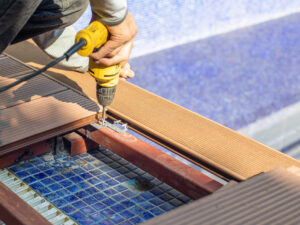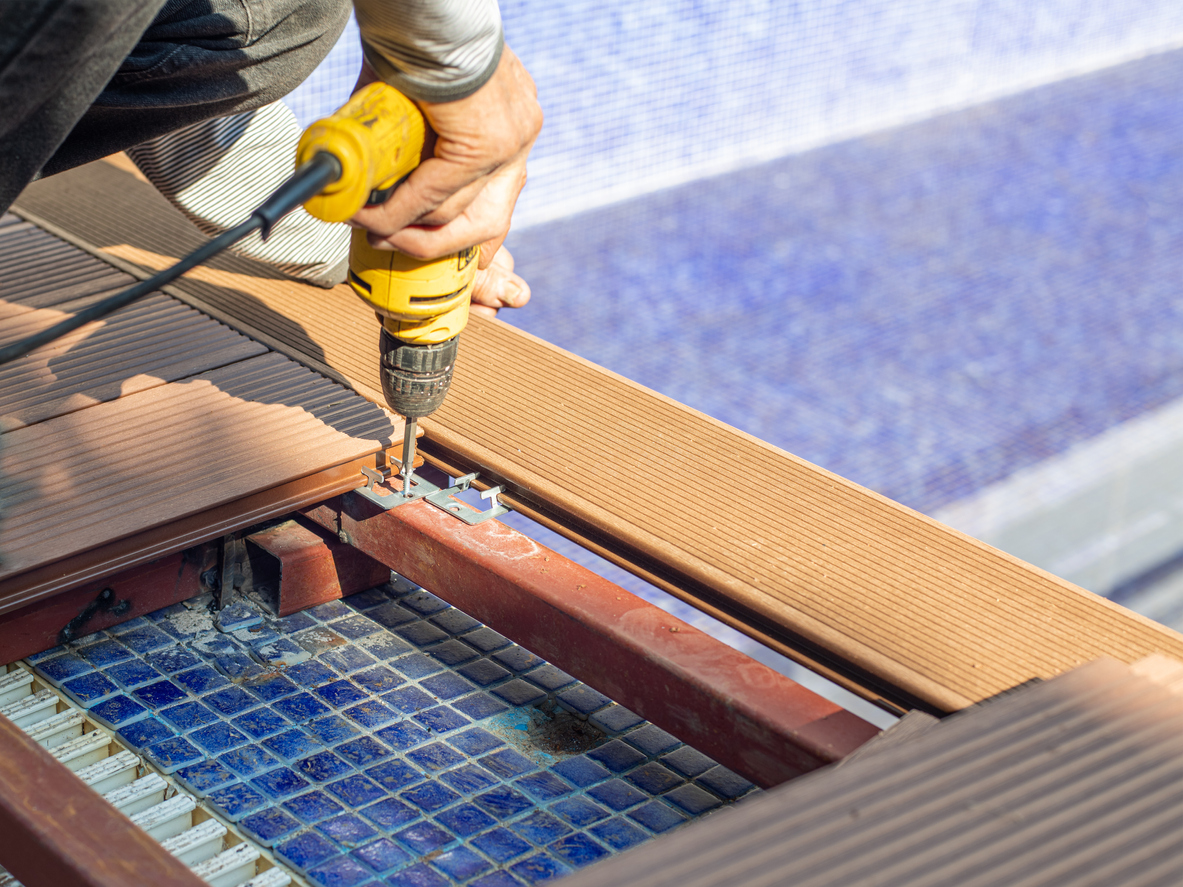Whether it’s hairline cracks in concrete or extensive rot from water damage, the cost of Deck Repair Summerville SC can be steep. However, some problems can be addressed by yourself.

A tape measure will help you find the right-size replacement planks, while a circular saw and drill make quick work of removing damaged boards.
Unless you have experience with woodworking and carpentry, hiring a professional is the best way to get your deck repaired properly. A pro will use the right materials and tools and do the job in a timely manner, saving you time and money. Plus, they’ll have the knowledge to prevent future problems with your deck.
There are a variety of reasons that deck repair might be needed, including wood rot or insect damage. You might also need to have the footings replaced. These are concrete pads that support each post that holds the deck. The type of footing required varies according to local building codes and soil conditions. Having the footings replaced by a professional is essential to ensuring the long-term stability of your deck.
Another reason that deck repair is often necessary is if there has been an accident. This can be anything from a tree branch falling on the deck to a turkey fryer being left out overnight. While accidents happen, you can reduce the likelihood of them by inspecting your deck at least twice a year and making any necessary repairs.
It is also a good idea to hire a professional for regular deck maintenance, such as staining or resealing. They will have the proper equipment to do a thorough job, which includes power sanders and a pressure washer. Additionally, they will know how to prep the deck for staining so that it is free from dirt and debris, which can lead to premature wear. They will also be able to help you find the right color of stain for your deck and provide any other relevant advice.
Measure the area.
Decks are great for relaxation and alfresco dining, but only if they’re in good condition. A sagging deck or one that’s showing signs of rot can be unsafe and require professional attention.
If the sagging is caused by rotting or structural issues, the deck may need to be replaced. However, in some cases, the cause of the sagging is less obvious. The deck may have been built on soil that was not compacted or may be suffering from erosion around the footings. Correcting these problems can help the deck withstand the elements and a heavier load without any further damage.
Wood rot is also a serious issue that can cause the deck to sag or become unstable. If you have a wood deck, it’s important to regularly check for signs of moisture in the wood, especially in joints, screw holes, and areas where boards meet. If you see signs of rot, it’s important to act quickly to repair the deck before the problem worsens.
Even though decks are usually constructed of durable materials like composite or capped polymer, they can still be subject to moisture problems. If the deck is covered by a canopy or if there are many trees nearby, it’s important to keep an eye on the amount of shade and sunlight that the deck gets.
If the deck is in need of staining, it’s a good idea to follow whatever preparation steps are recommended by the product you plan to use. These could include a treatment with a chemical brightener or cleaner, followed by a thorough sanding. This will ensure that the new stain or sealant will adhere properly and last longer. You should also be sure to sand all surfaces of the deck, including crevices and corners.
Get the right tools.
It’s important to have the right tools for deck repair, including a hammer and screwdriver. A tape measure is also essential for measuring replacement railings or planks, and a circular saw or jigsaw is necessary to cut and replace old boards. A cordless drill is useful for securing replacement screws or tightening loose ones, and a sander helps smooth over rough areas and avoid splinters.
Start by doing a thorough inspection of the deck, both on and off. Look for boards that are loose or warped, and check the joists to see how much they’ve rotted. If a joist is seriously rotted, it may need to be replaced. The ledger board is also a good place to start; this is the long piece of pressure-treated wood that attaches to the home and can cause structural damage if it’s significantly damaged or rotten.
Next, examine the deck for signs of mold or mildew. These can be easy to fix with a quick scrub or power wash, but it’s important to do so before the damage gets worse. It’s also important to examine the structure of the deck for any problems, such as gaps between boards or loose fasteners.
A good time to examine the ledger board is after it’s been washed, when you can clearly see the condition of the wood and any rot or cracking. You can also use this time to inspect the joist hangers for wear and tear; these metal pieces help keep the deck from coming off the house, so it’s important that they be in good shape. If they are rusting or missing, they should be replaced.
Buy the right materials.
Choosing the right materials for your deck can make all the difference when it comes to how well it holds up over time and how easy it is to maintain. There are many different options out there, so it’s important to know which ones will work best for you and your lifestyle.
Wood decks are the most popular choice, but there are several different types to choose from. The most common is pressure-treated lumber, which is made from southern pine that’s infused with chemicals to make it resistant to rot and insects. It’s relatively inexpensive and easy to find, making it a top choice for most homeowners. However, it’s not as durable as natural wood and will require regular refinishing to keep looking good.
Other types of wood decking include cedar and redwood, which both offer durability and a beautiful natural color. Redwood is known for its resistance to warping and rotting, while cedar has natural oils that repel pests and moisture. Both of these options are a bit more expensive than pressure-treated lumber, but they’ll hold up better in the long run and won’t require as much maintenance.
Another option is composite material, which is made from recycled plastics and wood fibers. It’s usually less expensive than wood and has a smooth finish that’s easy to clean and stain. It’s also highly weather-resistant and won’t warp or rot, but it does need to be power washed and refinished every two or three years.
Do the work.
If your deck’s wood has rotted away, it’s time to call in the professionals. They will be able to replace and reinforce posts, joists, beams, and boards. This will make the deck stronger and safer to walk on. They will also be able to advise you on what the best course of action is for your specific deck and the weather conditions in your area.
If you are looking to save money, you can try a few basic repairs yourself. Staining your own deck can be done for a fraction of the cost of hiring a contractor, especially in states with a lower cost of living. You may even be able to find the materials you need at your local home improvement store. It’s important to check with your local home improvement store before making a purchase to be sure they have the proper colors and stain to match your existing deck.
Another way to save money is to hire a contractor who will provide you with references and testimonials from previous clients. This is a great way to get an idea of the quality of work they do and how well they work with customers. You should also ask how they handle problems that arise on the job. A seasoned professional will be able to adjust quickly and still make sure the job gets done on time.
You should also check that your contractor has a valid license and insurance before hiring them for any type of work on your deck. This will protect you in case anything goes wrong on the job, and it will also let you know if they are a legitimate company. A reputable contractor will be happy to provide you with this information and should not have any problem offering you proof of their insurance, bonds, or worker’s compensation.
